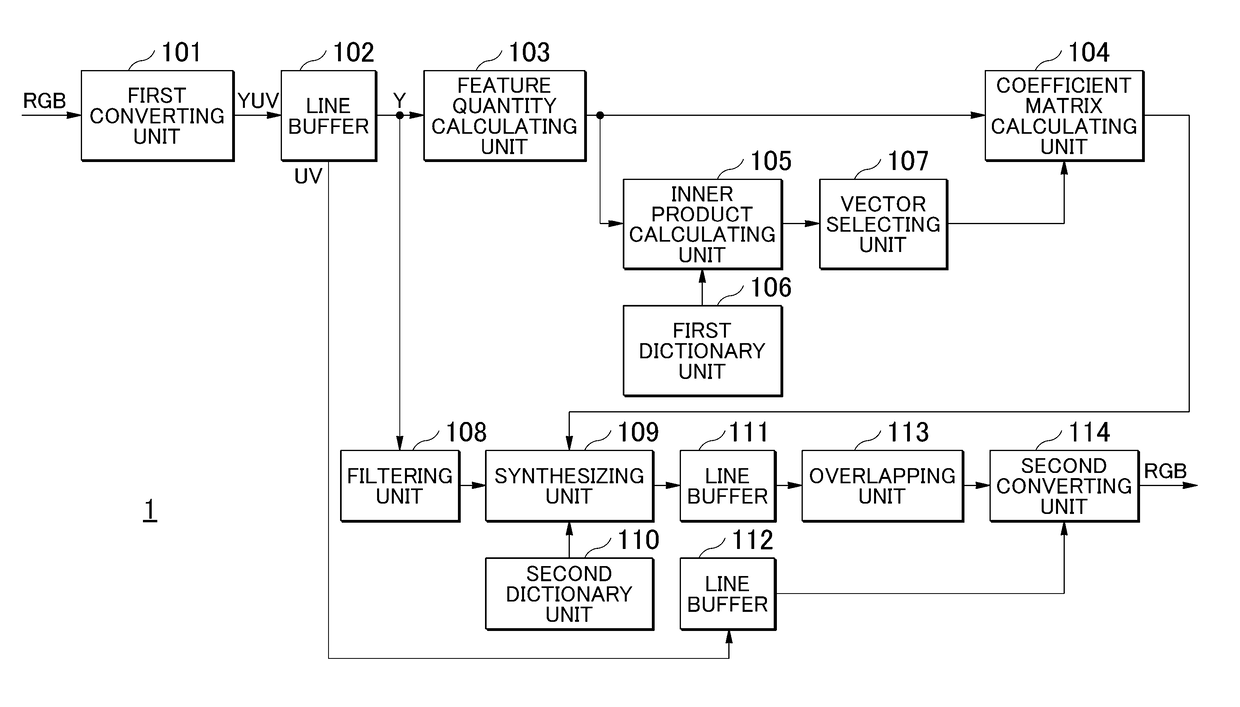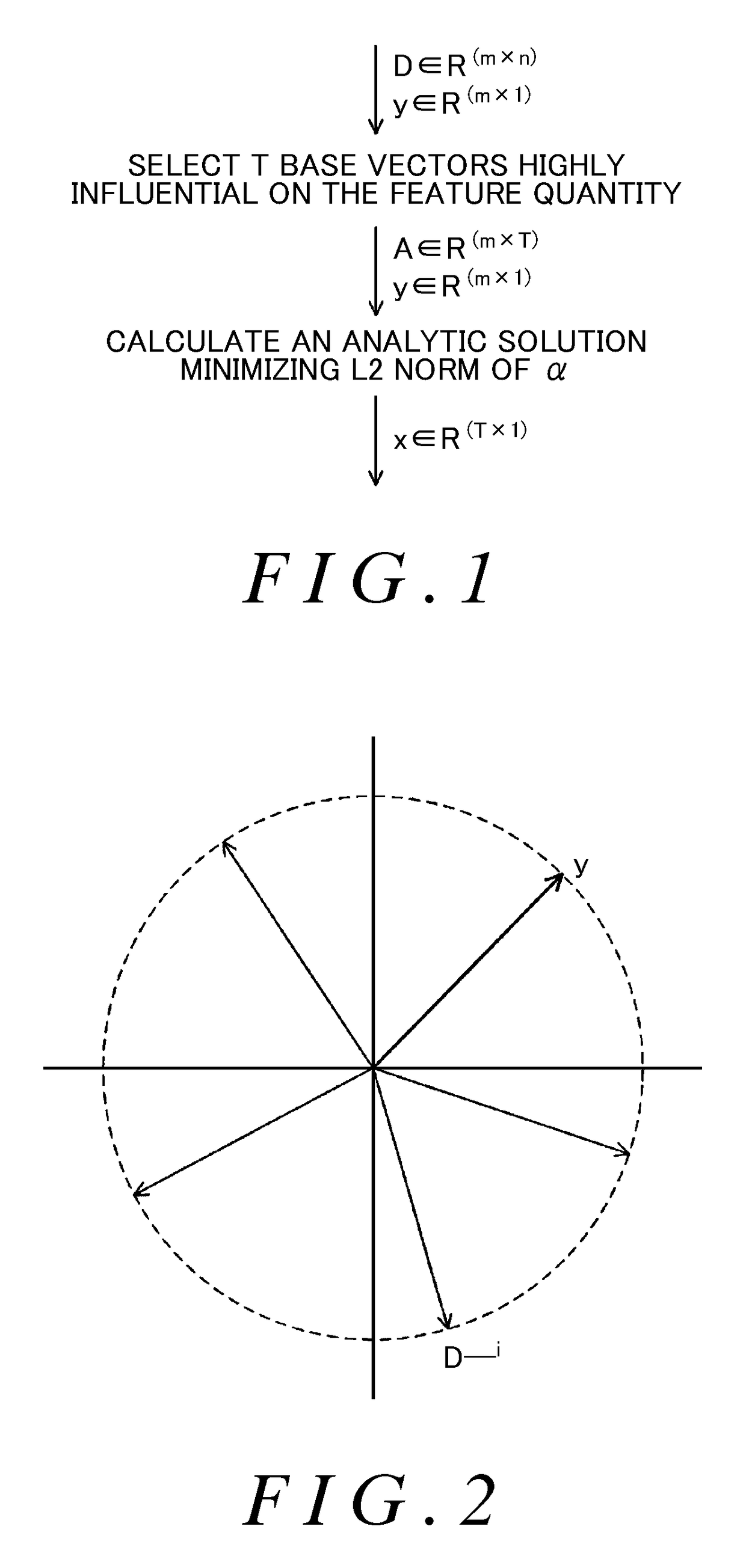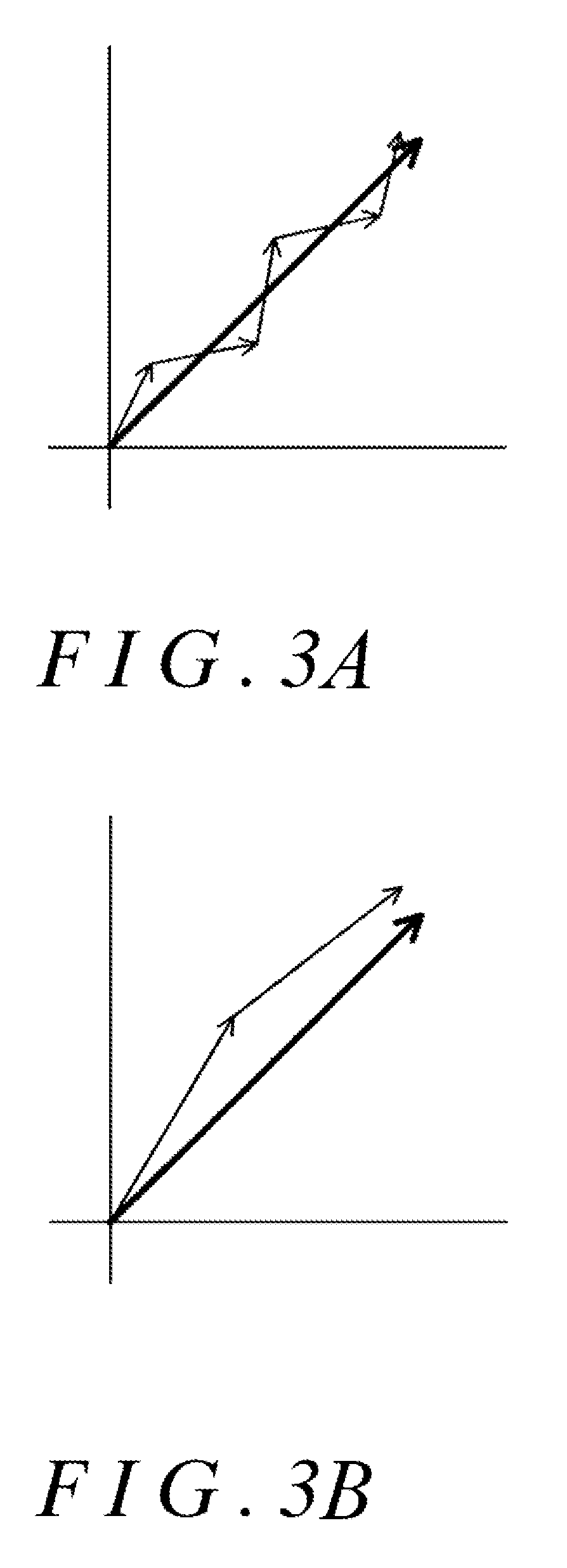Image quality enhancing apparatus, image display apparatus, image quality enhancing method, and computer readable storage medium
a technology of image quality and enhancing method, applied in image enhancement, image analysis, instruments, etc., can solve the problems of image quality degrade, image quality decline, and resolution decline, so as to reduce the amount of processes, reduce the processing time necessary for the calculation of coefficients, and delay the effect of the process
- Summary
- Abstract
- Description
- Claims
- Application Information
AI Technical Summary
Benefits of technology
Problems solved by technology
Method used
Image
Examples
embodiment 1
[0058]In the present embodiment, a sparse solution of a coefficient matrix α is calculated without using the iteration method. FIG. 1 is a conceptual diagram showing an outline of the method of calculating the sparse solution of the coefficient matrix α in Embodiment 1. In the present embodiment, T base vectors that are highly influential on the feature quantity of an image are selected from among n base vectors recorded in dictionary data. Here, T
[0059]FIG. 2 is a schematic view which expresses conceptually the relationship between the feature quantity y of an image and a plurality of base vectors. Matrix D with m lines and n columns is a matrix in which n base vectors D_i (i=1 to n) consisting of m elements are aggregated, and the feature quantity y is a vector consisting o...
embodiment 2
[0079]In Embodiment 2, an embodiment where the number of base vectors which express the feature quantity of an image with a linear sum is adjusted is shown. In Embodiment 1, the number of the base vectors with non-zero coefficients, T, is regarded as a constant value. In a method to solve a conditional equation of Equation (1) by the iteration method described in Non-Patent Document 1, the number of the base vectors with non-zero coefficients varies according to the position of the patch in an image. Specifically, the number of the base vectors increases in a portion of an edge in the image. Therefore, in the portions other than the edge portion, it is possible to decrease the number of base vectors. Also, when there is a lot of noise in the image, the larger the number of the base vectors, the easier it becomes for the linear sum of the base vectors to express the noise and the easier it becomes for the noise to reappear also in an image with the image quantity enhanced. Therefore,...
embodiment 3
[0090]The configuration of the image display apparatus according to Embodiment 3 is similar to that of Embodiment 2. FIG. 11 is a block diagram showing the configuration of internal functions of the image quality enhancing apparatus 1 according to Embodiment 3. The image quality enhancing apparatus 1 does not comprise the inner product calculating unit 105 and the vector selecting unit 107, the vector-count calculating unit 115 is connected to the coefficient matrix calculating unit 104, and the first dictionary unit 106 is connected to the coefficient matrix calculating unit 104.
[0091]The vector-count calculating unit 115 calculates the number of the base vectors T with non-zero coefficients by a method similar to that of Embodiment 2. Namely, the vector-count calculating unit 115 calculates the number of the base vectors T based on the value of which has been input from the control unit 2 or the noise standard deviation of the patch. The vector-count calculating unit 115 inputs th...
PUM
 Login to View More
Login to View More Abstract
Description
Claims
Application Information
 Login to View More
Login to View More - R&D
- Intellectual Property
- Life Sciences
- Materials
- Tech Scout
- Unparalleled Data Quality
- Higher Quality Content
- 60% Fewer Hallucinations
Browse by: Latest US Patents, China's latest patents, Technical Efficacy Thesaurus, Application Domain, Technology Topic, Popular Technical Reports.
© 2025 PatSnap. All rights reserved.Legal|Privacy policy|Modern Slavery Act Transparency Statement|Sitemap|About US| Contact US: help@patsnap.com



